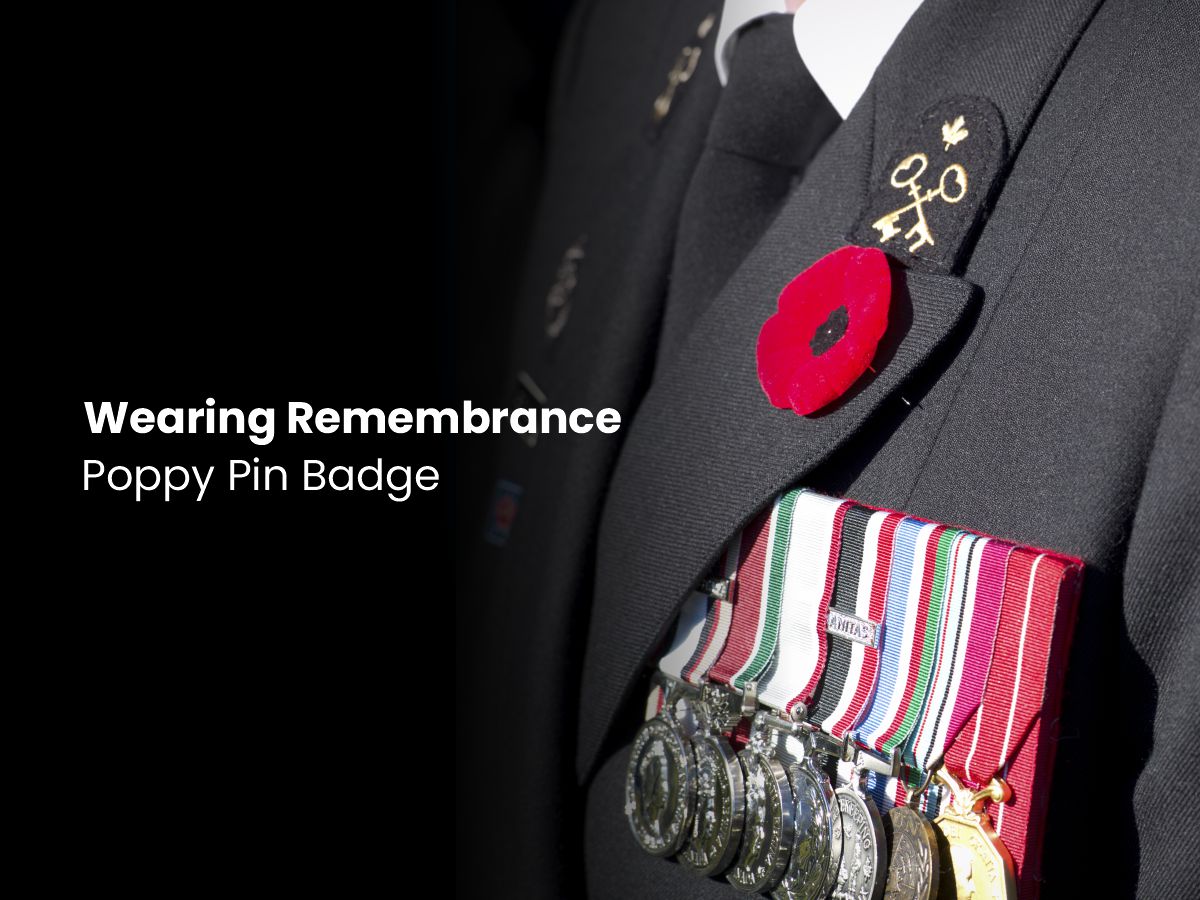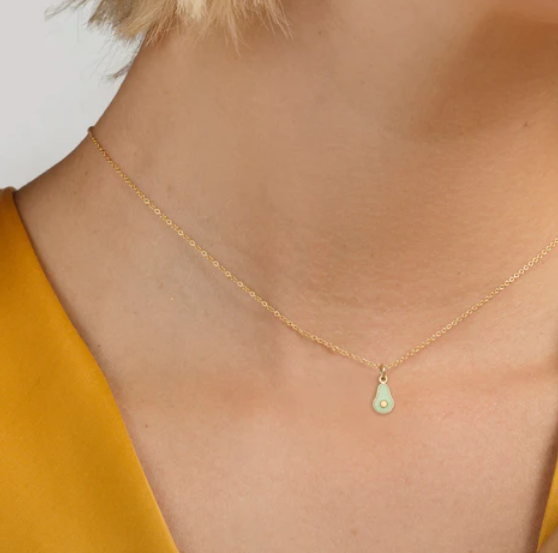In the United Kingdom, the poppy badge is more than a simple accessory—it’s a powerful symbol of remembrance, honour, and gratitude. Worn by millions each year, it serves as a poignant reminder of the sacrifices made by servicemen and women in times of conflict. For retail customers looking to wear this emblem with respect and understanding, knowing when and how to wear a poppy pin badge is essential.
This guide explores the history, significance, and practical aspects of wearing a poppy, ensuring you can honour its meaning with pride.
The Significance of the Poppy Badge
The poppy became a symbol of remembrance due to its association with the battlefields of World War I, particularly in Flanders, where poppies grew amidst the devastation. Immortalised in the poem In Flanders Fields, the flower represents both loss and hope. In the UK, poppy badges are widely worn to commemorate those who lost their lives in wars, particularly around Remembrance Day and Armistice Day.
Wearing a poppy is a personal act of respect, but it also supports charitable efforts. Funds raised through poppy sales contribute to veterans’ welfare, providing essential services for former service members and their families. For many, pinning on a poppy is a way to connect with history and express solidarity with those who have served.
When to Wear a Poppy Pin Badge
1. Leading Up to Remembrance Day
In the UK, the poppy-wearing season typically begins in late October, around the launch of the annual Poppy Appeal, and continues through to Remembrance Day on 11 November. This date marks the signing of the Armistice in 1918, which ended World War I. Many people choose to wear their poppy from the last week of October, though there’s no strict rule—some may start earlier to show early support.
2. Key Dates for Wearing a Poppy
- Remembrance Sunday: Observed on the second Sunday of November, this is a significant day for wearing a poppy. Ceremonies, parades, and services take place across the UK, and wearing a poppy is a meaningful way to participate.
- Armistice Day (11 November): At 11:00 a.m., a two-minute silence is held to honour the fallen. Wearing a poppy on this day underscores the solemnity of the moment.
- Other Occasions: While November is the primary time, some wear poppies at other military-related events, such as Armed Forces Day or specific anniversaries of battles. However, this is less common and depends on personal choice.
3. How Long to Wear a Poppy
There’s no official end date for wearing a poppy, but most people remove theirs after Remembrance Sunday or shortly after 11 November. Some choose to wear it until the end of November, particularly if attending additional remembrance events. The decision is personal, guided by respect for the symbol’s meaning.
How to Wear a Poppy Pin Badge
1. Positioning the Poppy
The poppy badge is traditionally worn on the left side of the chest, close to the heart, symbolising that the memory of the fallen is held dear. There’s no strict rule about exact placement, but it’s typically pinned to a jacket, coat, or shirt collar. For women, it’s also common to wear it on a scarf or hat, as long as it’s visible and secure.
- Clothing: Pin the poppy to outer garments like coats or blazers for visibility. Avoid placing it on casual items like t-shirts unless attending informal remembrance events.
- Securing the Pin: Most poppy badges come with a pin or clip. Ensure it’s fastened securely to prevent it from falling off. If the pin is loose, consider using a small piece of adhesive tape or a backing to keep it in place.
2. Wearing with Other Accessories
Poppy pins can be worn alongside other badges or jewellery, but care should be taken to avoid overshadowing the poppy’s significance. For example, at formal events, pair it with minimal accessories to maintain focus on the symbol. During remembrance services, avoid wearing overly bright or distracting items that might detract from the solemnity.
3. Caring for Your Poppy Badge
Poppy badges are often made of paper or lightweight materials, so they require gentle handling. Store them in a dry place when not in use, and avoid exposing them to rain or excessive wear. If your poppy becomes damaged, consider replacing it, as a worn or torn badge may appear disrespectful. Many collection points allow you to recycle old poppies, ensuring they’re disposed of thoughtfully.
Common Questions About Wearing a Poppy
1. Is There a Right or Wrong Way to Wear a Poppy?
While tradition guides how and when to wear a poppy, there’s flexibility. The key is to wear it with respect and understanding of its meaning. For example, some debate whether the poppy’s leaf should point to a specific direction (e.g., 11 o’clock to symbolise the Armistice hour). However, there’s no official rule, and the focus should be on the act of remembrance rather than minor details.
2. Who Can Wear a Poppy?
Anyone can wear a poppy badge, regardless of age, nationality, or connection to the military. It’s a universal symbol of gratitude for those who served. Parents often pin poppies on children’s clothing during school remembrance events, fostering an early understanding of its significance.
3. What If I Lose My Poppy?
Losing a poppy is common, especially with frequent wear. If this happens, simply purchase a new one. The act of buying another supports the charitable cause, and replacing a lost poppy shows continued commitment to remembrance.
Cultural and Social Context of Wearing a Poppy
1. Public Perception
In the UK, wearing a poppy is widely seen as a respectful gesture, particularly in November. However, it’s a personal choice, and some individuals may opt not to wear one for various reasons, such as personal beliefs or discomfort with public displays. Respecting others’ choices is as important as wearing a poppy thoughtfully.
2. Workplace and School Settings
Many workplaces encourage employees to wear poppies, especially in customer-facing roles or during remembrance events. Schools often distribute poppies to students and incorporate remembrance activities into lessons. If you’re unsure about wearing a poppy in these settings, check with your employer or school for guidance.
3. Poppy Pins in Modern Times
Poppy pins for remembrance have evolved beyond the traditional paper flower. Today, you can find enamel, metal, or even fabric versions, offering durability and style. These modern designs appeal to younger audiences and those seeking a keepsake. Regardless of the material, the poppy’s meaning remains unchanged—a tribute to sacrifice and service.
Practical Tips for Retail Customers
1. Where to Get a Poppy Badge
Poppy badges are available from late October at supermarkets, high street shops, and collection points staffed by volunteers. You’ll also find them at train stations, community centres, and online through official channels. When purchasing, donate what you can—there’s no fixed price, allowing everyone to contribute.
2. Choosing a Poppy Badge
With various designs available, select a poppy that suits your style while honouring its purpose. Traditional paper poppies are lightweight and affordable, while enamel or metal pins offer longevity. Ensure your choice is from a reputable source to guarantee funds support veterans’ charities.
3. Supporting the Cause Year-Round
Wearing a poppy is a November tradition, but supporting veterans doesn’t end there. Consider volunteering, donating, or attending events like Armed Forces Day to show ongoing appreciation. Retail customers can also look for products that support military charities, extending the spirit of remembrance.
Final Thoughts
Wearing a poppy pin badge is a small but meaningful act that connects us to a century-long tradition of remembrance. By understanding when and how to wear it, you can honour the sacrifices of those who served while supporting a vital cause. Whether pinned to your coat during a chilly November morning or worn proudly at a Remembrance Sunday service, the poppy is a symbol of unity, gratitude, and hope. Make it part of your tradition, worn with respect and care, to keep the memory of the fallen alive.




